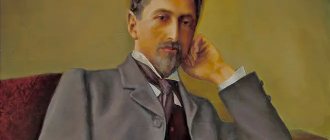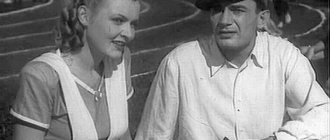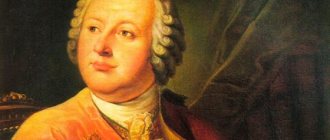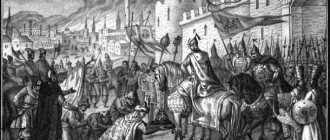Ivan the Terrible is the first Russian Tsar, Grand Duke of Moscow and All Rus', who determined the historical development of Russia for many generations to come. The name of Ivan IV is associated with oprichnina and enslavement of peasants, reforms and doubling of the country's territory. This historical figure is still surrounded by legends and hoaxes. In the minds of the average person, the image of the tsar is equally strongly associated with Ivan Vasilyevich, who “changed his profession,” with executions during the repressions and the murder of several wives. Ivan Vasilyevich the Terrible is assessed as a reformer and tyrant, a religious fanatic and a brilliant politician. We invite you to get to know him better.
Fragment of the painting “Tsar Ivan Vasilyevich the Terrible” by V. Vasnetsov, 1879
Biography of Ivan the Terrible
Ivan IV Vasilyevich (25 August 1530 - 28 March 1584) was the eldest heir of Grand Duke Vasily III of the Rurik dynasty and the Lithuanian princess Elena Glinskaya. He was born in the village of Kolomenskoye near Moscow and was baptized in the Trinity-Sergius Monastery. Ivan Vasilyevich became the long-awaited first-born of his royal parents, who were childless for a long time. However, he became an orphan by the age of seven. Vasily III died from blood poisoning when Tsarevich John was only three years old. For the next five years, the Grand Duchess remained regent under the minor ruler, but she became a victim of court intrigue and was poisoned by the boyars in 1538. The events of childhood and adolescence largely influenced the development of the character of Ivan the Terrible. He was forced to observe the struggle for power between the boyar families of the Shuiskys, Belskys and Obolenskys, and together with his brother endure the oppression of their guardians, including deprivation of food and everyday things. His isolation, suspicion and suspiciousness only grew stronger as he grew older and later began to take the form of real cruelty. At the same time, Ivan IV was exceptionally talented: he had an impeccable memory, composed music, and was equally well versed in military affairs and philosophy, mathematics and rhetoric, poetry and chess strategy. THIS IS INTERESTING: Ivan the Terrible died while playing chess with Prince Ivan Belsky. Ivan Vasilyevich was crowned king on January 16, 1547 at the age of 16. For the first time in history, a ruler was on the Russian throne who took the title of Tsar, and not just Grand Duke.
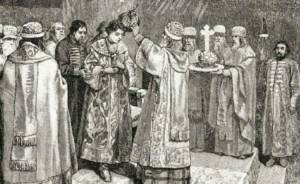
Metropolitan Macarius crowns Ivan the Terrible as king
Gradually getting rid of the influence of the boyars, Ivan Vasilyevich surrounded himself with trusted people and created an unofficial group of advisers called the Elected Rada. It included the tsar's close associates: Metropolitan Macarius, Alexei Adashev, Andrei Kurbsky, Archpriest Sylvester, clerk of the Ambassadorial Prikaz Ivan Viskovaty and others. In the very first years of his sovereign reign, Ivan IV achieved significant success in foreign policy and expansion of state borders in the East. He took decisive steps to strengthen autocratic power and completed the process of collecting lands around Moscow.
07.09.2020
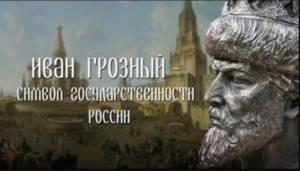
The Holy Venerable Seraphim of Sarov argued that “the middle years of life are mostly stormy. What matters is how life begins and how it ends.” Russia begged Ivan the Terrible for twenty-three years. His father, Grand Duke Vasily Ioanovich, did not have children for a long time. And only after marriage with Elena Glinskaya from the highly respected Lithuanian noble family of the Glinskys, the Grand Duke’s couple had a son, John.
History has preserved not only the birthplace of Ivan the Terrible (Moscow, the village of Kolomenskoye), but also the place of his conception (Alexandrova Sloboda). As indicated in the chronicles, Grand Duchess Elena at the end of November 1529, while in Alexandrova Sloboda, felt that she was “fell pregnant” and told her husband that she was “pregnant.” The rejoiced Vasily Ivanovich, having “made a vow” (that is, after Filippov’s vow on November 15), hastened to make a pilgrimage trip to the far North, where he visited with Grand Duchess Elena “Pereslavl, Rostov, Yaroslavl, Vologda, Kirillo-Beloozersky, Ferapontov monasteries, to Saint Denisius on Glushnitsa, on Prilutsa to Demetrius at the Savior, in Kornilev, in the Pavlova Hermitage and ordered to pray for childbearing, so that God would give him a child” (PSRL IV, 265; VII, 272).
All of Orthodox Rus' also prayed; prayers were offered in all churches for the granting of an heir to Vasily. The Grand Duke himself with special faith resorted in his prayers to the miracle worker of Borovsky, the Monk Paphnutius. The prayer was answered... and “split open the union of their barrenness” (Historical Acts I, No. 216). John Vasilyevich was born in a thunderstorm, on “Thunder Day,” on Thursday, August 25 (September 7 - according to the new style) 1530 (in the summer of 7038) at 7 pm on the day of memory of St. apostles Bartholomew and Titus. In the Rostov Chronicle of 1587 we read: “At the present hour of his (John IV) birth, their powers were heard throughout the entire region, as if the foundations of the earth were shaking, such a terrible thunder.”
In the “Thousand-Year Chronicle of Unusual Natural Phenomena” this event is described as follows: “The thunder was terrible and the flash of lightning was all over all regions of the Russian land. There has not been such thunder and shaking of the air since the creation of the Earth.” “As if the earth were to be crushed and struggle because of the great fear.” It was a terrible but good omen of the coming cleansing of Rus'. “The merciful God opened the union of his (Basily) barrenness and granted him the gift of giving birth to a son, an heir to his power, like him in wisdom and courage and correction of piety. He was given the blessed name Ivan. And not only the All-Russian Kingdom, but everywhere all orthodoxies rejoiced” (Degree Book II. p. 606). The joy was not in vain. Born in a thunderstorm, he became a truly formidable king for evil spirits.
A thunderstorm inspires the fear of God, and He is the basis of wisdom. The Russian people revered thunder and thunderstorms as a manifestation of God's Omnipotence. In folk tradition, thunderstorm is perceived as God's power and at the same time as a cleansing and fertilizing power. The gospel sermon is like thunder, for it crushes the stubbornness of hearts and stiff-necked people (Rev. 14:2). The thunderstorm serves as a prototype of the Last Judgment (Exodus 29:6; Jeremiah 25:30; John 12:29).
Ivan the Terrible himself subsequently wrote “The Canon of the Terrible Angel,” which has survived to this day. The Terrible Angel is the Archangel Michael. It was this image that Ivan Vasilyevich personified in the battle for Russia with the incarnated spirits of evil in heaven, which is why he bears the name of the Terrible Warrior.
Through the prayers of St. Kirill Belozersky Vasily III was obliged to give birth to an heir. In 1531-1533 In gratitude to Saint Basil III, he erected two churches in the Kirillovo-Belozersky Monastery: in honor of his angel, Archangel Gabriel, and in honor of the newborn angel, John the Baptist. To commemorate the birth of his son, Vasily III founded another temple in the village of Kolomenskoye - the Church of the Ascension of the Lord. And it is very symbolic that it was in it that, 387 years later, on March 2 (15), 1917, on the day of the forcible removal from power of the last Russian Tsar-Martyr Nicholas II, the appearance of the “Sovereign” icon of the Mother of God took place. Truly this is a sign that the power of Tsar John the Terrible was consecrated by God and His Mother - our Most Pure, Blessed Lady, the Virgin Mary.
The great seer Mikhail Klopsky prophesied in Vazhitsy, addressing the Novgorodians: “The Grand Duke will have a son, Timofey, aka Ivan. He will be the heir to the entire Russian Kingdom and will be threatening (terrible) to all surrounding countries, and he will be the owner of this Novgorod of yours and will abolish your pride.” In one of the chronicles (“State Book”), the following narrative was preserved: The mother of Ivan the Terrible, Elena Glinskaya, asked the holy fool Domentian who would be born to her, to which she received the answer: “Titus will be born - a broad mind.”
John was baptized on Sunday, September 4, 1530, in the Trinity-Sergius Lavra on the day of remembrance of the Hieromartyr Babyla, Archbishop of Great Antioch. The elder of the Joseph Monastery, the hundred-year-old Kasyan Bosoy, was called to be the successors of the future king, as it is said about him in the Nikon Chronicle “he was a fellow faster of the Venerable Joseph of Volotsk,” the elder Danila of Pereyaslavl, the elder of the Trinity Job Kurtsov; The abbot of the Holy Trinity Lavra, Iosaf Skripitsyn (later Metropolitan of All Rus'), officiated.
The choice of recipients has its own hidden meaning. All of them are prayer fighters for Holy Rus' against the Jewish heresy. A fellow faster and teacher of Kasian Bosogo was Hegumen Joseph Volotsky, the main exposer of the heresy of the Judaizers in Rus'. Vladimir Monomakh reigned in Pereyaslavl. It was he who the people asked in 1113 to rid Rus' of the Jews.
The author of “The Life of Daniel of Pereyaslavl” (the mentioned successor of Ivan the Terrible) calls Ivan the Terrible “the true shepherd and collector of the Russian land, known in all directions, destroying all wickedness and delusion, abolishing all enmity and autocracy of those who have, establishing silence and truth.”
Trinity-Sergius Lavra is the heart of the Russian Church. Vasily Ioannovich with his own hands placed the newly consecrated child in a shrine on the celibate relics of St. Sergius of Radonezh, offering up the prayer: “O venerable sanctuary, wonder-working Sergius! You are the father of the Father and with boldness you stand before the Holy Trinity and through your prayer you have granted me this child, you and keep him harmless from any slander of the enemy, visible and invisible, you protect him with your holy prayers and provide him, reverend, to the utmost, and then, we keep him with God, with his lips he will give praise and thanksgiving to God and your prayers... Pray for us, the Holy Trinity, consubstantial!”
The Monk Sergius truly became the Heavenly intercessor and comrade-in-arms of John. Hegumen Joseph took the baby from the shrine and reverently said: “Receive, O God-loving King, the child given by God, who has appeared to you for a long time, raise him as a punishment for the Law of the Lord and your royal deanery, so that your son will be according to your desires.” The baby was given communion. “His birth is not simple, not like other things happen,” the chronicle testifies. The holy prayer books of the royal family were: Sergius of Radonezh, Abraham of Rostov, Dionysius of Glushitsky, Nikita of Pereslavl, Savva of Storozhevsky, Varlaam of Khutyn, Yaroslavl princes: Theodore, David, Constantine.
"Russian Monarchist"
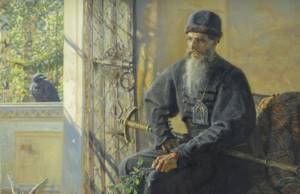
108
0
Leave feedback:
Register to be able to leave comments.
News
All news
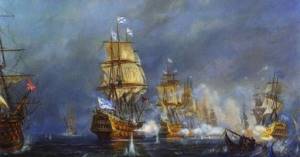
Jul
26
2021
“Why are you guys standing there? Fear will not get rid of death. Behind me, who wants to live!
Likes: 129
During the Russian-Swedish war of 1788-1790. squadron of the Baltic Fleet under the overall command of Admiral V.Ya. Chichagov near the island. Eland, during the battle, performed a heroic act as a member of the crew of a 66-gun ca...

Jul
25
2021
Happy Navy Day!
Likes: 136
Comrades Nakhimovites, cadets, sailors, foremen, midshipmen, officers and admirals! We sincerely congratulate you on Navy Day! The Navy is the pride of our Fatherland, its power...
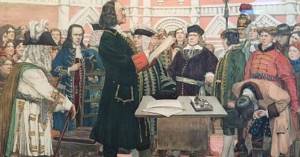
Jul
25
2021
Bribe takers - executed immediately!
Likes: 147
On July 25, 1714, Peter I issued a decree “On the prohibition of bribes and promises.” Those who violated his demands were considered violators of state rights and opponents of government. They were punishable by death...
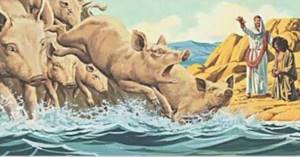
Jul
25
2021
WHAT DO WE BELIEVE?
Likes: 130
The Gadarenes saw the wondrous miracle of the Lord, revealed in the expulsion of a legion of demons, and, however, the whole city came out and prayed to the Lord, “so that He would depart from their borders.” It is not clear that they are hostile to...
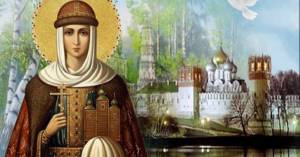
Jul
24
2021
Holy Equal-to-the-Apostles Grand Duchess Olga of Russia
Likes: 132
Today the entire Orthodox World prays, which from ancient times was called the Head of Faith and the Root of Orthodoxy in the Russian land. After all, it was through this woman that the enlightenment of Rus' with the light of Christianity began...

Jul
23
2021
Moscow Suvorov students discussed issues of physical education for Russian cadets
Likes: 148
The All-Russian video conference “Cadets: physical education is the basis for the upbringing and education of Russian youth” took place at the House of Public Organizations. Organizers – ANO “Cadet Sports League”...
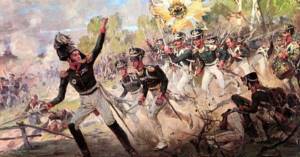
Jul
23
2021
The feat of Raevsky and his sons
Likes: 124
During the Patriotic War of 1812, near Saltanovka, south of Mogilev, a battle took place between units of the Russian 7th Infantry Corps of General N.N. Raevsky (15 thousand people) and French troops...

Jul
22
2021
The first dogs in space
Likes: 128
On July 22, 1951, the mongrels Dezik and Gypsy rose into space. The purpose of the dog launching experiment was to observe the behavior of highly organized animals under conditions of a ballistic missile flight…
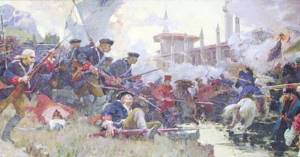
Jul
21
2021
The defeat of Turkey on the Black Sea
Likes: 133
On July 21, 1774, the Ottoman Empire signed the Kuchuk-Kaynardzhi Treaty with Russia, which marked the end of the second Russian-Turkish war. As a result, Turkey paid Russia an indemnity of 4.5 m...
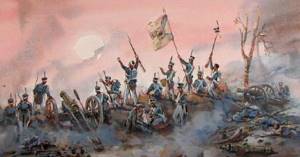
Jul
20
2021
Battle of Larga
Likes: 126
On July 20, 1770, Russian troops under the command of General Pyotr Aleksandrovich Rumyantsev defeated the Turkish-Tatar army at the mouth of the Larga River (the left tributary of the Prut River on the territory of the Principality of Mol...

Jul
20
2021
The first sign of pride is resentment
Likes: 133
When a person is offended, this speaks of his hidden deep pride. Touchy people are very proud, self-loving people. And when we catch ourselves thinking that we are offended, this only indicates...
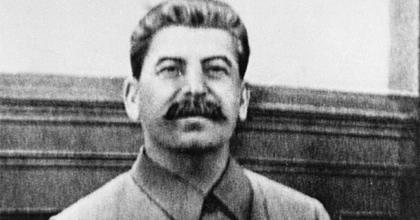
Jul
19
2021
J.V. Stalin became People's Commissar of Defense
Likes: 141
On July 19, 1941, by decree of the Presidium of the Supreme Soviet of the USSR, Joseph Vissarionovich STALIN was appointed People's Commissar of Defense. Before this, the People's Commissariat was headed by Semyon Timoshenko. The war required the concentration of power...

Jul
18
2021
Jet ram of pilot Kulyapin
Likes: 140
On July 18, 1981, the deputy commander of the aviation squadron for political affairs, Captain V. A. Kulyapin, over the territory of the Transcaucasian Military District, shot down an intruder G...

Jul
18
2021
MEDIUM TANK T-44
Likes: 133
Even before the end of the tests, on July 18, 1944, GKO decree No. 6209 “On organizing the production of T-44 medium tanks at plant No. 75 and No. 264 of the People's Commissariat of Tanks” was issued. The T-44 medium tank was created at the design bureau...

Jul
18
2021
VERA SOTNIKA
Likes: 127
What is the faith of the centurion! I surprised the Lord Himself. Its essence is that he confessed the Lord as the God of all, the omnipotent ruler and ruler of all things; That’s why I asked: just say the word and you’ll be healed...
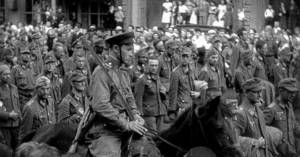
Jul
17
2021
Parade of the Vanquished
Likes: 142
On the morning of July 17, 1944, 57,000 captured fascists marched in a column through the center of Moscow. People took to the streets to see with their own eyes those who took their children, husbands, and fathers away from them. The bulk of the prisoners...

Jul
17
2021
Birthday of the naval aviation of the Russian Navy
Likes: 128
On July 17, 1916, four aircraft from the Orlitsa conducted an air battle over the Baltic Sea with four German aircraft, which ended in victory for the Russian naval pilots. Two Kaiser airplanes...
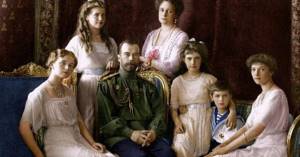
Jul
17
2021
THE BLESSED TSAR NIKOLAI ALEXANDROVICH AND HIS FAMILY
Likes: 103
Today, all of Russia commemorates in prayer one of the most tragic events in all Russian history. On the night of July 17, 1918, Russian Emperor Nicholas II and his entire family were killed: Empress Alexandra...
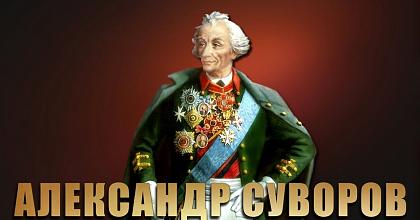
Jul
16
2021
“I trusted in God and was steadfast”
Likes: 150
Suvorov is immortal, his name, deeds and achievements will remain in people's memory forever. With each century, Suvorov’s victories shine brighter and brighter, consecrating the historical path of Russia with unfading glory, inspiring...
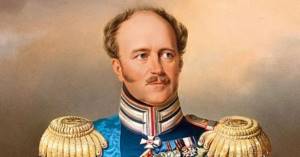
Jul
16
2021
“Every decent person is aware of the need for a vigilant police force.”
Likes: 121
On this day in 1826, by decree of Sovereign Nicholas I, the Third Department of His Imperial Majesty’s Own Chancellery was created, headed by the famous general, hero of the Fatherland...
Domestic policy
The era of Ivan the Terrible is assessed ambiguously. This is the period of the formation of an estate-representative monarchy in Russia, a huge increase in territory, reforms of the military, judicial and tax systems, and the emergence of local self-government. But the second half of the reign of Ivan Vasilyevich the Terrible was marked by political persecution, the final enslavement of the peasants, defeat in the Livonian War and economic decline. Here are the main reforms relating to the internal policy of the state:
- Convening of Zemsky Sobors with representatives of all classes, except the peasantry. (The first - in 1549).
- The Council of the Hundred Heads - streamlining the norms of church law. (1551).
- Tax reform.
- Reform of the judicial system.
- Military reform.
- Zemstvo reform - the introduction of local self-government.
- Enslavement of the peasants.
- The emergence of printing.
- Political repression.
Foreign policy
In general, the results of the reign of Ivan IV the Terrible are assessed as a crushing failure in the West and a tremendous success in the East.
- Annexation of the Kazan and Astrakhan Khanates, Bashkiria, and part of the territories of the Nogai Horde.
- The beginning of the conquest of Siberia by Ermak's troops.
- Severe economic consequences of the invasion of the Crimean Tatars and Turks.
- Defeat in the Livonian War.
We invite you to watch a short video about Russian foreign policy during the reign of Ivan the Terrible.
The childhood of Ivan the Terrible
Ivan IV nominally became Grand Duke at the age of three. Born in August 1530, the first son of the Grand Duke of Moscow Vasily III and his young wife Elena Glinskaya on his father belonged to the Rurik family, and on his mother he was a descendant of Khan Mamai. The future ruler was three years old when his father became seriously ill. Anticipating his imminent death, the prince formed a guardian council of close boyars around his son.
The boyars were supposed to take care of the boy until he reached the age of 15 and could assume his rights. After the death of Vasily III, the boyars actually seized power. During this time, Ivan Vasilyevich saw enough of the most terrible pictures. His mother died at the age of 30 (presumably poisoned by the boyars), and Ivan himself and his younger brother Yuri were kept in a black body: “... they began to raise them as strangers or the last poor,” he later recalled.
Oprichnina
Oprichnina is the period from 1565 to 1572. The state was divided into two parts: oprichnina and zemshchina. The first was a royal inheritance with a center in the Alexandrovskaya Sloboda and new principles of governance, the second - all other territories with a traditional way of life. The Boyar Duma and the Oprichnina Army were created. The persecution and execution of the boyar-princely elite began. The first victims were representatives of the Shuisky, Golovin and Obolensky families. A fight against traitors and sedition was declared. The culmination was the campaign against Novgorod, where, during the defeat, looting and violence by the guardsmen, several thousand people, including women and children, were brutally killed. Many were executed publicly during the political purge. After these bloody events, the image of a tyrant ruler was imprinted in the people's memory, replicated in our time by many myths that are far from reality.
If you look at the numbers, the historical context and the experience of other countries of that era, it becomes obvious that Ivan the Terrible is in vain put on a par with Vlad the Impaler or Gilles de Rais. Crimes against innocent people cannot be justified, but in comparison with the Western rulers of that time, who executed hundreds of thousands, Ivan the Terrible cannot be called a despot obsessed with cruelty.
Personal life: wives and heirs
Ivan the Terrible was married eight times. Two of these marriages are not confirmed by historical science and cause controversy in the scientific community. However, towards the end of his life, Ivan the Terrible, being a very God-fearing person and suffering from serious illnesses, admitted fornication and repented of his sins. During his repentance, he mentioned numerous relationships with women and illegitimate children. His first and longest marriage (13 years) with Anastasia Zakharyina-Yuryeva was concluded on February 3, 1547, immediately after the crowning of Ivan IV. The sixteen-year-old sovereign met Anastasia at a bridal show and chose her not for political reasons, but because of his sincere interest in the girl. The couple had six children in their marriage. Grand Duchess Anastasia had a beneficial effect on the mood and character of Ivan the Terrible. In the summer of 1560, the queen became seriously ill and died, presumably poisoned. Thirty-year-old Ivan Vasilyevich took the loss seriously, his temper deteriorated greatly, and the methods of governing the state became noticeably tougher.
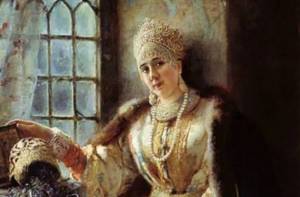
The first wife of Ivan the Terrible Anastasia Zakharyina-Yuryeva
For the second time, the tsar married the 15-year-old heiress of the Kabardian princes, Maria Temryukova. The only son born in this marriage died in infancy. After the tragedy, the tense relationship between the spouses only worsened, the tsar lost interest in the Circassian princess. She died in 1569, according to the official version - from illness. The next chosen one of Ivan the Terrible was Marfa Sobakina from a family of Kolomna nobles. After the wedding, the girl lived only two weeks. It is believed that she was poisoned. According to religious canons, the church could not approve the fourth wedding, and then Ivan the Terrible declared that the previous marriage had not been consummated due to the ill health of the newlywed, and therefore was not considered valid. A month later, another ceremony took place: Anna Kotlovskaya became the Tsar’s wife. The marriage lasted six months, after which the queen was tonsured a nun and exiled to the Tikhvin Vvedensky Monastery. THIS IS INTERESTING! It is unknown whether the fifth bride of the Tsar, Maria Dolgorukaya, actually existed. There is an opinion that this is a fictional character, information about which appeared only in the 19th century.
However, the glory of Bluebeard was firmly entrenched in Ivan the Terrible. According to legend, he married secretly, without the blessing of the church, and went with his 14-year-old wife to Alexandrovskaya Sloboda. On their wedding night, he found out that Mary was not a virgin and ordered her to be drowned. The story is striking in its cruelty, but no real evidence was found in the sources. Anna Vasilchikova, the fifth or sixth wife of the Tsar, was exiled to the Intercession Monastery in Suzdal. She later died under unclear circumstances. The existence of the next wife of Ivan the Terrible, not recognized by the church, is in question. The identity of Vasilisa Melentyeva is shrouded in mystery; little is known about her fate. It is assumed that she shared the fate of her two predecessors and was forcibly tonsured a nun. In 1580, Ivan the Terrible married 27-year-old Maria Nagoya. The marriage produced Tsarevich Dmitry, with whose name the events of the Time of Troubles are closely connected. Although by that time the child was no longer alive, he was killed at the age of eight. Of the eight children of Ivan the Terrible, six died in childhood. The eldest heir, Ivan Ivanovich, died on November 19, 1581. The version of the murder during a quarrel with his father has no real evidence, but was immortalized by the talented brush of Ilya Repin and is still popular. The youngest son of Ivan IV the Terrible, Fyodor Ivanovich, became the last Russian ruler from the Rurik family.
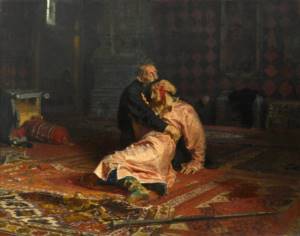
Painting by I. Repin “Ivan the Terrible kills his son” 1581
Personal life of Ivan the Terrible
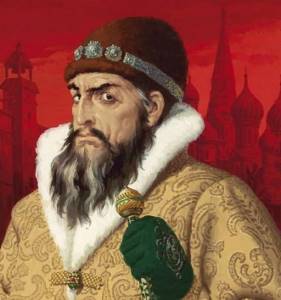
Historians say that Ivan the Terrible married 7 times. The first wedding took place in 1574. Anastasia Zakharyina-Yuryeva became the tsar’s chosen one. During family life, 6 children were born. Only 2 of them survived - Fedor and Ivan. In 1560, the wife died. The Tsar married Maria Cherkasskaya, the daughter of a Kabardian prince. Maria gave birth to her only son, who lived only 1 month. Grozny was disappointed in his wife. She died 8 years after the birth of her first child.
The third wife of the ruler was Maria Sobakina, the daughter of a nobleman from the village of Kolomenskoye. The wedding took place in 1571. 15 days after this solemn event, Maria died. The true cause of the woman's death is still unknown.
Six months later, the tsar married again - to Anna Koltovskaya. There were no children in the marriage. 1 year after the wedding, the royal wife ended up in a monastery, where she died as a result.
The fifth wife of Ivan the Terrible, named Maria Dolgorukaya, is known for her sad fate. The ruler drowned the girl in a pond after the first night, when he learned that she had lost her virginity before marriage.
In 1575 the king married again. This time Anna Vasilchikova became the wife. She remained queen for a relatively short time. Ivan the Terrible forcibly exiled his wife to a monastery for treason.
The last, seventh wife of the sovereign, was Maria Nagaya. According to surviving written evidence, the wedding took place in 1580. In 1582, the wife gave birth to the heir to the throne, Dmitry. After the death of Ivan Vasilyevich, the new tsar exiled Maria to the city of Uglich. There he forced her to become a monk. In Russian history, she became known as the mother of False Dmitry, whose reign was marked by the beginning of the Time of Troubles in the state.
Circumstances of the death of Ivan the Terrible
In the last years of his life, Ivan the Terrible often moved away from secular society. His health deteriorated, he spent a lot of time in solitude and prayer, but continued to engage in government affairs. The king often complained of pain in his back and knees. Over time, it became difficult for him to move, and the sovereign was carried in a chair. His body was swollen and covered with purulent boils. Doctors of the 16th century treated syphilis with small doses of mercury, poisoning the patient’s body. As a result, problems with the nervous system and bone tissue were added to the venereal disease. Ivan Vasilyevich suffered from superstitious fears and even fell into religious psychosis. He was afraid of retribution for sins in the afterlife, and suspected everyone around him of treason and conspiracy. His mood varied from outbursts of rage to humble repentance. Both the mental and physical health of the king was in a precarious state.
In February 1584, a month before the death of Ivan the Terrible, one of the buildings in the Aleksandrovskaya Sloboda was struck by lightning. This event shocked the king so much that he considered it a bad sign. Thunder in February is an exceptional natural phenomenon, and the inflamed mind of a deeply ill man saw this as an evil omen.
In March 1584, the situation worsened so much that Ivan the Terrible fell ill and prepared for death. On March 16 he fell into unconsciousness, but improved over the next two days. Ivan the Terrible ordered the bathhouse to be heated, and then invited Ivan Belsky to a chess game. On March 18 (28), 1584, at the age of 54, the king died while playing chess. In 1963, his grave was opened to examine his remains. Persistent rumors about the poisoning of Ivan the Terrible were not confirmed. But at present, some historians and archaeologists dispute these results. Allegedly, the content of arsenic and mercury in the body of Ivan the Terrible exceeded the amount expected by the drugs of that time, created on their basis.
Death
The date of death of Ivan the Terrible is March 28, 1584. This happened during a game of chess. It is believed that death was caused by overgrown osteophytes, which made the ruler inactive. In addition to a serious illness, death could be caused by an unhealthy lifestyle and constant nervous shock. At the time of his death, Ivan Vasilyevich was 53 years old. Despite his relatively young age, he looked like an old man.
The ruler was buried next to his son, Ivan. The final resting place was the Archangel Cathedral near the Moscow Kremlin. Immediately after the king’s burial, speculation began to appear that his death was due to poisoning. There was an assumption among the people that the poisoner was Boris Godunov, who ascended the Russian throne after Fyodor Ivanovich.
The widespread version of the poisoning of the Tsar was considered by historians until 1963, when the tomb of Ivan the Terrible was opened. Studies have shown the absence of arsenic in the remains of the sovereign. After this, the version of the violent death event ceased to be discussed by scientists. The death of Ivan Vasilyevich marked the end of the Rurik dynasty. Time of Troubles began in the Russian state.
Interesting Facts
Ivan the Terrible is one of the most controversial figures in the history of the Russian state. His political legacy and turbulent personal life still cause much debate. Here are some non-trivial facts about the sovereign of all Rus':
- Ivan the Terrible loved cucumber jam;
- his height was 180 cm, by the standards of the 16th century he was considered a very tall man;
- contemporaries noted the tsar's gaze and heavy gaze;
- ruled for 50 years and 105 days, longer than any other head of the Russian state;
- banned the shaving of beards, because he saw in this the harmful trends of the West;
- was interested in falconry, chess, and the art of bell ringing;
- From childhood he was very religious; towards the end of his life this resulted in fear of posthumous punishment and atonement for sins.
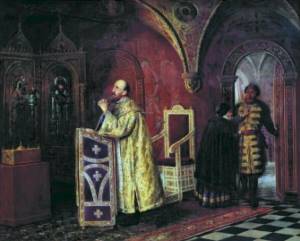
Painting by V. Pukirev “Ivan the Terrible in the Chapel”. Author: Amber Tree

